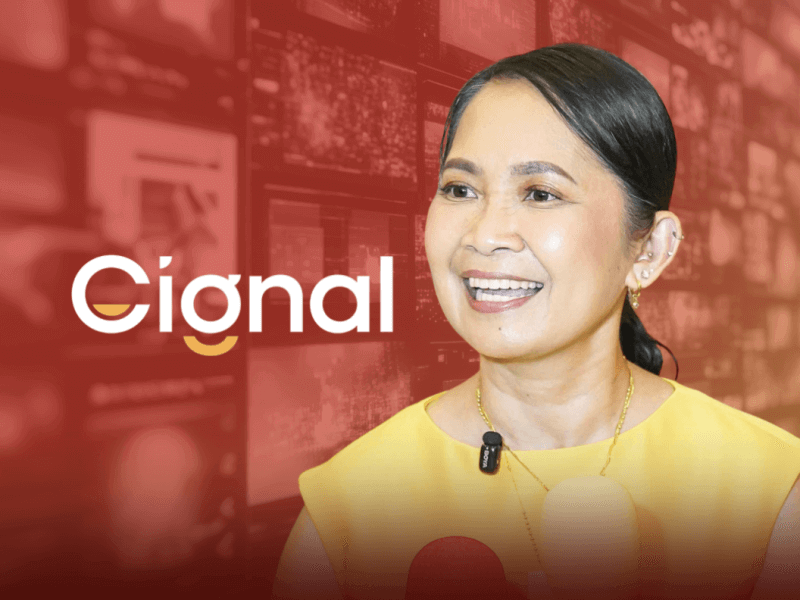

“Dax, where’s today’s Biz Buzz column?” he asked. “No column today? Because I can’t find it online.”
I replied that the management of the Philippine Daily Inquirer had recently decided to stop carrying the wildly popular column on Inquirer.net, and instead put it behind a paywall. Readers would have to subscribe to the electronic version of the newspaper called INQPlus or buy the printed edition to catch up on the latest business gossip.
“Are you guys crazy?!” he exclaimed. “You’re giving up all that website traffic for a paywall model? In the Philippines? You guys aren’t even promoting it. I don’t see a subscription offer even if I wanted to subscribe.”
It was at that moment that I started to worry about the Inquirer and the imperfect execution of the good digital strategy that was supposed to take us into the future.
End of an era
Today, June 30, 2025, the Philippine Daily Inquirer will publish its final edition under its existing structure, ending a corporate life just five months shy of its 40th anniversary.
Once the country’s most influential broadsheet, the physical newspaper will, henceforth, be produced by Inquirer.net, its digital sister company, signaling a long-overdue strategic pivot.
It is a cost-cutting maneuver, but it is also an acknowledgment that the economic model that once sustained print journalism has become unsustainable.
Good strategy, bad execution
Inquirer’s current challenges were not caused by the lack of a digital strategy on the part of its owners and management. In fact, they had a good one. The Inquirer was one of the first media outfits in the country to have an internet presence in the form of the defunct INQ7, a joint venture with GMA Network.
But as with all strategies that fail, the problem was the execution.
Long story short: The newsroom dinosaurs were in denial, and the leadership — ever wary of pushback from brand-name editors, hard-hitting reporters, and union-backed employees — was not forceful enough to ram the required changes through.
I personally believe the Prieto family, which owns the Inquirer, was simply too decorous, too genteel, too… nice. They were the owners of the enterprise yet, all too often, they have to take pains to couch their policy mandates in inoffensive language, instead of simply laying down the law for everyone to follow, take it or leave it.
Slow unraveling
The Inquirer’s decline is a textbook case of how even dominant institutions can fall behind when market shifts outpace internal adaptation.
The biggest disruption was technological, with the internet’s rise hollowing out the newspaper’s revenue base, especially classified advertising. Readers moved online and advertisers followed. The print edition, once a daily ritual for millions, began losing relevance as mobile-first news became the norm.
Although the organization had an early start on the internet, the digital unit functioned as an independent corporate entity from the print side, resulting in missed opportunities to merge content strategies, consolidate operations, and capture new audiences at scale.
‘Digital first, print surprise’
In 2015, I was invited to be a part of a small working group composed of management, editors, reporters, and tech people that would help shape the newspaper’s digital transformation. One co-member, journalist Christian Esguerra, mentioned a phrase that would become the catchphrase of the group’s mission: “Digital first, print surprise”.
That meant the Inquirer had to break stories online as fast and as accurately as it could, and then, the next day, sell a physical newspaper that would surprise the reader with information, insights, and analyses that were unavailable the previous day in the digital space.
That’s how it went in theory and, during meetings, everyone was enthusiastic about it. But in practice, resistance was rife among traditional editors and reporters.
The editors — many of whom had been, for years, in the habit of arriving for work way after lunch — resisted having to work varying shifts to cover the 24/7 news cycle.
On the other hand, reporters who would be required to break stories online through the day, and then rework or update them for the 5 p.m. print edition deadline, kept asking one question: “Will we get paid for this extra work?”
It was a valid concern, but it would ultimately prove to be a shortsighted one. Privately, company president Sandy Prieto-Romualdez could only throw her arms up in frustration, especially since Inquirer was already paying its reporters a premium compared to industry peers.
Meanwhile, the reporters at Inquirer.net were being paid a relative pittance all while filing more stories. Because they were younger, less experienced, or less skilled, many were viewed with disdain by their Inquirer print brethren. They were, for all intents and purposes, treated as second class citizens in the group.
Upheaval
In 2016, the newspaper became a political lightning rod, as the Duterte administration piled pressure on the Prieto family over alleged (but unproven) tax issues and government property lease anomalies. This was widely viewed as retaliation for the paper’s critical coverage.
The following year, the Prietos entered into negotiations to sell the Inquirer to billionaire Ramon Ang.
I'm told both parties had initially agreed on an indicative price of P4 billion, subject to due diligence by the buyer. The first review by Mr. Ang’s team revealed substantial “uncollectible” receivables, so the offer was reduced to P3 billion.
The Prietos then decided to exclude the Inquirer’s real estate properties from the deal, which resulted in Mr. Ang’s offer being trimmed further to P2 billion — a price that the selling family deemed to be too low. The deal collapsed in 2018.
In hindsight, maybe they should’ve agreed to sell at that price, given the Inquirer’s fate today. Meanwhile, Mr. Ang clearly dodged a bullet there, and his due diligence team proved to be correct in trying to curb his enthusiasm for the deal.
I had a semi-intimate view of that process, although I was not involved in the negotiations. The extent of my participation was arranging the first meeting between the Prietos and Mr. Ang, passing the occasional message between principals to cut through bureaucratic layers, and scheduling the final “no-hard-feelings” meeting after talks had broken down.
In the wake of the failed deal, continuity returned, but a coherent execution of the digital strategy never materialized. The newsroom endured, but the business model didn’t.
Breaking point
By the 2020s, the Inquirer’s print operations were bleeding. Distribution costs increased and ad revenues dropped. The COVID-19 pandemic accelerated circulation declines, and many newspaper readers never came back.
Management bought some time by cutting costs, merging sections, reducing staff through attrition, but recovery proved elusive. In early 2025, it had become obvious that the case for keeping the print business intact no longer held. Thus, the decision was made to shut down the legacy corporate entity and transfer all publishing operations to the leaner, more agile digital side.
What if…
All this makes me wonder what would have happened if management had decided to make Inquirer.net the main growth engine as early 2017 instead of trying to fend off the slow but sure decline of print.
Back then, I escalated my concern that Biz Buzz should not be kept behind a paywall because the lack of visibility was killing it. You couldn’t even Google it and be led to a subscription page. You just had to know how to subscribe to the poorly promoted e-paper. “Out of sight, out of mind,” I reasoned.
I also suggested that, to mitigate the declining number of pages on the newspaper (caused by rising prices of newsprint), we should shorten printed stories while adding QR codes to the end of each article. If the reader wanted to know more, he could click on the code with his smartphone and land on a more detailed, content-rich version of the piece on Inquirer.net.
To both ideas, the reply from the top was the same: “No. We have to give readers a reason to keep buying the newspaper, not lead them away from it.”
The dinosaurs were firmly in charge and they were in denial about the large meteorite hurtling down from the sky.
Free access to Biz Buzz was eventually restored five years later but, by then, it had lost its lead to Bilyonaryo.com.
Looking forward
The silver lining in all this is that Inquirer’s pivot could mark the beginning of its resurgence. Its online platform commands one of the largest digital audiences in the country. It already has the scale. Now, it is being handed the strategic primacy it previously lacked.
With lower costs, unified editorial oversight, and better data analytics, the digital arm has the foundation to explore new revenue models.
Yes, this pivot is late… but not too late. Its loyal readership, institutional memory, and editorial bench still offer competitive advantages.
Success will mean demolishing legacy media habits, serving digital audiences with rigor, and sustaining quality journalism in an age of disinformation and fragmentation.
The Inquirer is not vanishing, just being restructured. Whether it thrives again will depend not on sentiment, but on strategy and execution.
And the brand that once helped bring down a dictatorship may yet have enough impetus for a successful digital second act.

Senior Reporter

